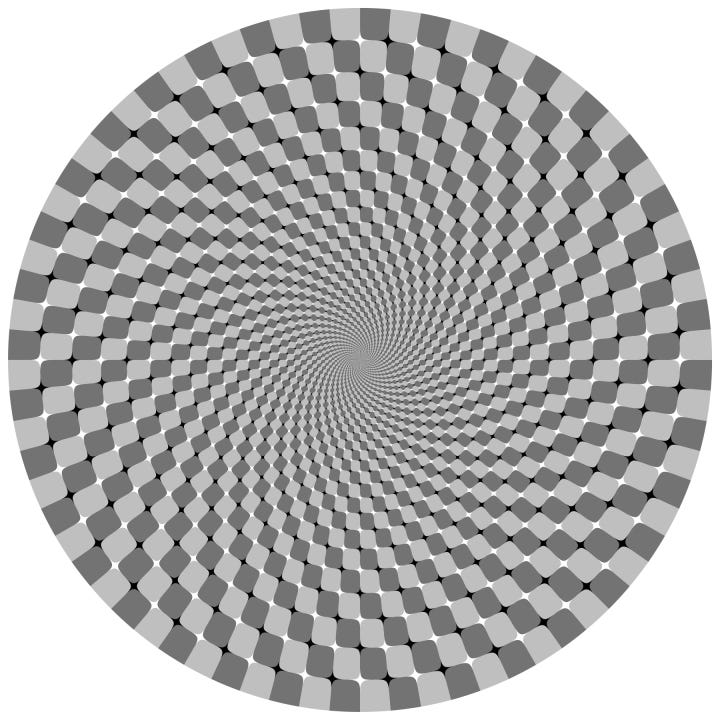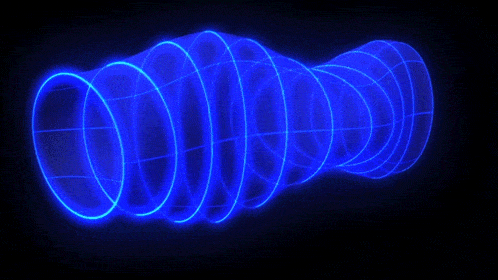Weekend Diversion: Make Yourself Hallucinate (Safely)
How you can safely trick your mind into triggering a visual hallucination, using only math and neuroscience!
“Life should not be a journey to the grave with the intention of arriving safely in a pretty and well preserved body, but rather to skid in broadside in a cloud of smoke, thoroughly used up, totally worn out, and loudly proclaiming, ‘Wow! What a Ride!’” –Hunter S. Thompson
For those of you who’ve never experienced exactly what it feels like to alter your perceptions, and for those of you who have but don’t want to spend hours and hours experiencing the effects, your options have traditionally been limited. Perhaps a song might provide a window into the experience of blurred reality for you, such as Stereolab’s song: Hallucinex.
Thanks to the combined power of technology and our understanding of neuroscience (and perception), you don’t need drugs or to provoke your brain into releasing DMT. Rather, a simple visual pattern can induce temporary (lasting under a minute) hallucinations, safely and temporarily.

The visual patterns that can make us hallucinate typically involve tunnel-like perceptions, something that both math and neuroscience back up. In general, there are a number of things you can do to disorient your visual cortex, and your brain’s attempts (and failures) to adapt to the stimuli are what trigger the hallucination effect!

Well, the website Neave.com has put together a way — simply by staring at a moving pattern on your screen — to induce distorted, hallucinatory vision in pretty much anyone!

They warn you that if you are sensitive to flashing lights or suffer from photosensitive epilepsy, you should avoid this. But if that’s not you, go experience it yourself at their site; just click here.
But I couldn’t resist trying to do it myself, and make a video that I could directly embed into this post. It’s not quite as effective as the original, but it still works! To get the most out of your experience, just full-screen it, move your face close to the screen and stare at the center, trying not to blink and trying not to look away.
When the video ends (it’s only 40 seconds long), look anyplace else and enjoy your distorted, hallucinatory vision for under a minute!
I’ll reiterate that the illusion is far more effective on the original site itself; I notice the circular feature appear to vanish entirely! For some reason, they made this into an iPhone app, for the hallucination junkie who’s on-the-go.

There are other videos out there that try and stimulate the same effects, and they appear to vary greatly in their effectiveness dependent on the particulars of the individual watching it, but what a fun little trip!
Once again, check out the original here, and hope you enjoyed this safe, simple (and legal) way to enjoy a little mind-bending this weekend. However you spend the rest of it, hope it’s a great one!
An earlier version of this post originally appeared on the old Starts With A Bang blog at Scienceblogs.





